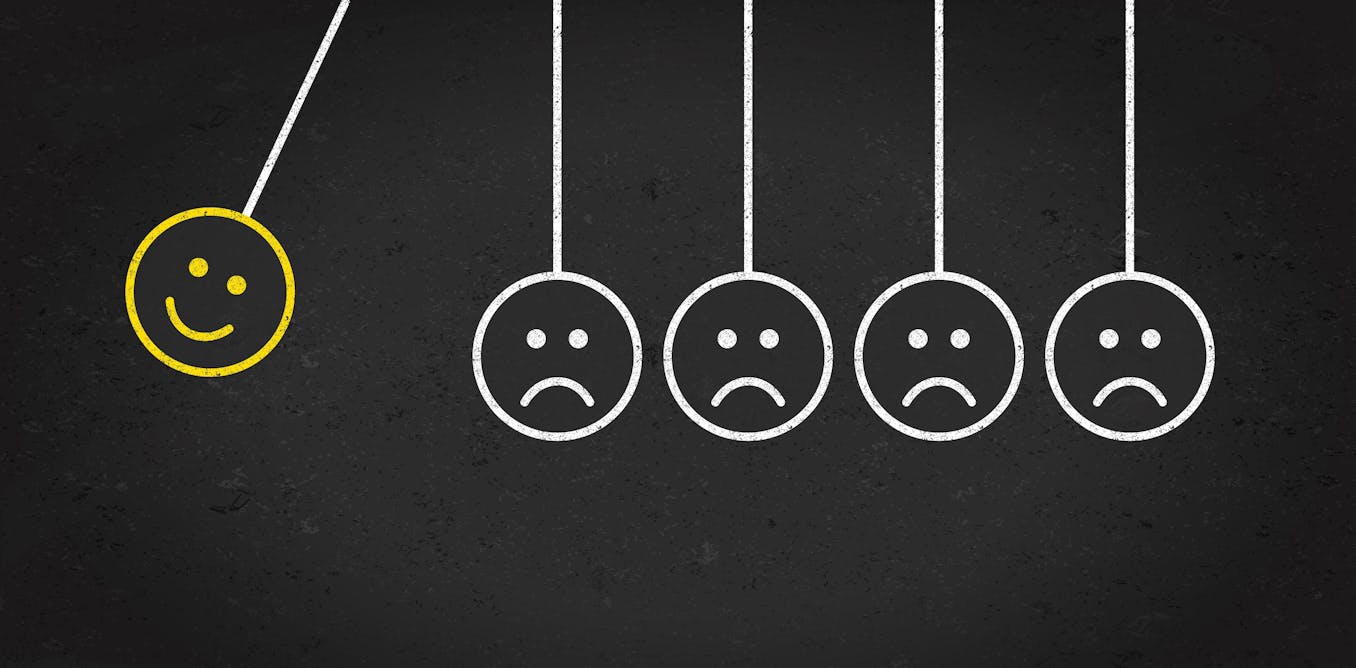What’s the Point of Digital Fashion? | Karinna Grant | TED
In a TED talk by Karinna Grant titled “What’s the Point of Digital Fashion?” the speaker delves into the emerging trend of digital fashion and its potential impact on the future of the industry. Grant explores the concept of dematerialization within fashion, where physical clothing is being replaced by digital counterparts. She notes that digital fashion, made of pixels rather than threads, is rapidly growing in popularity, with digital-first brands like the Fabricant, Tribute brand, and Auroboros leading the way.
Grant discusses how luxury brands like Vuitton, Balenciaga, and Gucci are embracing digital fashion, blurring the lines between gaming and luxury. She highlights the increasing demand for virtual items, such as a Gucci handbag that resold for $4,000, more than the physical version’s retail price. Grant also emphasizes the infinite creativity and possibilities of designing digitally, free from physical constraints like gravity or fabric draping.
The speaker argues that as we move into the web3 generation of the internet, where we inhabit virtual spaces in 3D, digital fashion will play an essential role in shaping our online identities. Grant envisions a future where we seamlessly blend physical and digital fashion, creating a new form of self-expression and interaction. Ultimately, she believes that digital fashion has the power to revolutionize how we produce, consume, and interact with clothing, offering a glimpse into a future where the boundaries between the physical and virtual worlds are increasingly blurred.
Watch the video by TED
By 2033, you just might have a smaller wardrobe than you have now. Not just because you’ve already checked which items spark joy, but because you probably won’t own as much physical clothing. I’m not just saying this because typically we own more than we need,
And we actually only wear 20 percent of our wardrobe, but because dematerialization will have taken over fashion. Think about the books that you own, the music that we listen to. They are now in the cloud. And many of our favorite stores are online, and this is happening to our clothes too.
Digital versions of physical products and digital-only products are making their way into our lives through gaming, social media and shopping. This is an Alexander McQueen digital tee that you can download to an avatar to wear inside a game. Digital fashion is made of pixels rather than threads,
And it’s still a relatively new sector of the virtual goods industry. But in the last five years, it’s kind of exploded, and we’ve seen zeitgeist moments from digital-first brands like the Fabricant, Tribute brand and Auroboros. And RTFKT, who got the world talking about “phygitals:” physical and digital versions that you buy together.
And luxury brands are also in this space, like Vuitton, Balenciaga and Gucci, and they’re doing something surprising at surprising price points. So they’re bringing together the worlds of gaming and luxury. Some of these items are less than 20 dollars, and this Gucci Roblox handbag actually resold for 4,000 dollars,
Which is more than the physical one retails for, just an hour after it went for sale on Roblox. This is interesting because quite often our first luxury purchase is sunglasses or a lipstick. In the kind of near future, and especially for the next generation, that’s not going to be the case.
It will be a virtual item that you can wear, just like that handbag inside a game. And if your pockets are deep enough, you can also pay luxury prices. CryptoPunks and Tiffany last year did a collaboration where they made phygital pendants, 250 personalized ones, which were the princely sum of 50,000 dollars.
I’m a fashion academic and innovator, and I’ve spent a lot of years researching how and when people adopt new trends, whether their dad’s sneakers or Snapchat filters. And it’s kind of ironic because I fell in love with digital fashion, because I like vintage fashion,
And the thought of being able to wear key pieces from fashion history is something that keeps me awake late at night. This jacket by Mugler has been painstakingly digitized by Superficial Studio. What’s super exciting is that we’re at the very beginning of this revolution within fashion,
And when it goes mainstream, probably within the next five years, it’s really going to change not only what we wear, but also how we produce and consume goods, hopefully for the better. Just because something isn’t physical doesn’t mean it’s not real. And just because something is dematerialized
Doesn’t mean it gives you a warm, funny feeling in your stomach when you buy it or own it or wear it. Especially when it looks like this. So for digital fashion, there’s something really for everybody, from sportswear to couture to the kind of straight out ethereal.
And when I see pieces like these that are so cool that I want to own them physically, I get frustrated because there isn’t a word to describe that. So I’ve started calling it “meta-desire.” And I’m still working on an emoji for it, which I think is very important. Digital fashion is characterized by infinite creativity. When you design in the physical dimension, you unfortunately have constraints like gravity, how a fabric drapes, perhaps the cost of raw materials. But when you design virtually,
You have limitless possibilities of say, for example, what a dress could look like, how it could perform or function. This is a piece by Institute of Digital Fashion, which is part jewelry, part clothing. And in the near future, we have completely new categories of materials and products.
And magazines are also using this as well. They’re adopting digital fashion to make the pages and the fashion become more immersive. But so what? That’s what my mom often asks me. “What’s the point of digital fashion?” Well, you have two choices. You can either wear it on your real self, your physical self,
Or you can wear it on your digital self. And gamers have already been doing this for over 25 years. They already understand the value of virtual goods. They’ve been earning, modifying and putting skins and cosmetics on their characters to wear inside games. Digital dressing is a thing.
This is me during the pandemic when I couldn’t get to any stores, but I could get a dopamine hit and, of course, share it on social media. You guys can try this yourselves if you go to platforms like The Dematerialised or DressX. And a relatively new company, Zero10, also does this. So digital dressing is when an extra layer, like an augmented reality, is added on to a photo or a video. And this is something which I call “soft wearables.”
So effectively you have a kind of, like a new form of fast fashion, because you could update the clothes that you’re wearing with new messages, slogans on a daily basis if you want. This was a project from Nike and RTFKT last year, and something that I’m excited about in the farther future
Is that we won’t need to view this extra digital content through our mobile phone. It’ll actually emit from the smart materials in the fabrics themselves. But why do we need digital fashion? Well today, we already spend one third of our time online.
And as we move into the next generation of the internet, known as web3, we won’t just be on the internet, we’re actually going to be inside it. And just like Dolly, we already curate different aspects of who we are for each of the different platforms that we show ourselves on.
But we’re not just going to be 2D images inside social media circles or squares anymore. We’re actually going to be full-bodied avatars working, shopping, dating even, in 3D spaces. If you go to South Korea, the avatar culture is already very well embedded. From K-pop brands to digital banking advisors. They’re kind of everywhere.
And they have an app called Zepeto. And this is my Zepeto avatar here, the one in purple. This is just a selection of my digital twins, the avatars that I use on a daily basis in messaging to convey different emotions, also to meet friends and to go to digital events in 3D spaces.
And you can probably tell that I try to convey different aspects of my personality in my avatars, different trends that I want to kind of show, and also which tribes I want to belong to. But the metaverse that we’ve all been promised isn’t actually here for a while yet.
Some people are quite excited that it’s not going to be here for a while yet. However, it’s actually the physical fashion sector that could be impacted by digital fashion the most. Some of you might have heard a lot of negative hype and sentiment around NFTs, non-fungible tokens,
But actually they are key to the future of digital fashion because they turn a regular file, like a jpeg, into an asset that you can own and that you can trade. Brands like Roberts Wood, Prada and Diesel have all done this. They’ve all sold phygital items as NFTs.
For us, as consumers, this is really good because we can check to see if something is real or authentic before we buy it. Also, once we actually buy it, people can see that it’s us that owns it on a blockchain. And for designers, especially emerging ones, it helps them protect their designs.
And each time this piece is resold, the designer gets a royalty fee. This is going to be a game changer for the fashion sector, because it redistributes power and money back towards the original designers and creators. But it’s not just about creativity and aesthetics. Digital fashion could also make us be more sustainable.
150 billion garments are manufactured every year, and many of them are unsold. This overproduction is unnecessary. And what we need to see more of — and I’m talking specifically to you, fast fashion retailers — is that instead of just relying on previous sales history, you actually showcase digital versions of products
Before you manufacture them. US brand Finesse already does this and has no waste in their production processes. And how about a fashion tool that helps you wear that other 80 percent of your wardrobe? Save Your Wardrobe is an amazing tool that digitizes your wardrobe,
Kind of works a little bit like a fitness tracker, helps you style outfits together and facilitates care and repair, so that your items last longer. And it could be a way that you could help reduce the impact of the 92 million tons of clothing that ends up in landfill each year.
So the exciting thing is, the “Clueless” dream closet is actually already here. And lastly, e-commerce return rates within fashion are scarily high, between 40 to 60 percent. And this has a real environmental cost. So again, how about if retailers helped us try things digitally before we purchased them physically? John Lewis in the UK uses artificial intelligence to do digital dressing
So that consumers can try before they buy. And what they’ve been finding is that people have been trying over 80 items every time they shop, and it also makes online shopping much more fun. Looking to the future, by 2033, it’s probably likely that you’ll have a Spotify-style subscription
To download the latest fashion to wear on your work hologram calls or to flex on your avatar to a virtual gallery opening. Just another couple of reasons why that wardrobe of yours might have a lot less in it. Thank you.
About TED
The TED Talks channel features the best talks and performances from the TED Conference, where the world’s leading thinkers and doers give the talk of their lives in 18 minutes (or less). Look for talks on Technology, Entertainment and Design — plus science, business, global issues, the arts and more. You’re welcome to link to or embed these videos, forward them to others and share these ideas with people you know.
Video “What’s the Point of Digital Fashion? | Karinna Grant | TED” was uploaded on 03/01/2024 to Youtube Channel TED







































